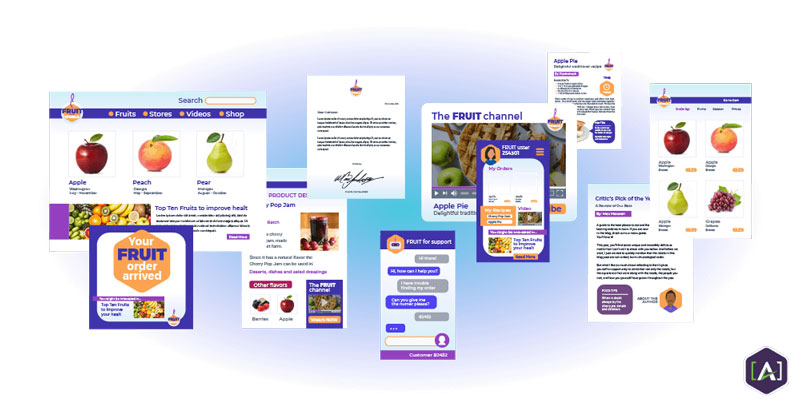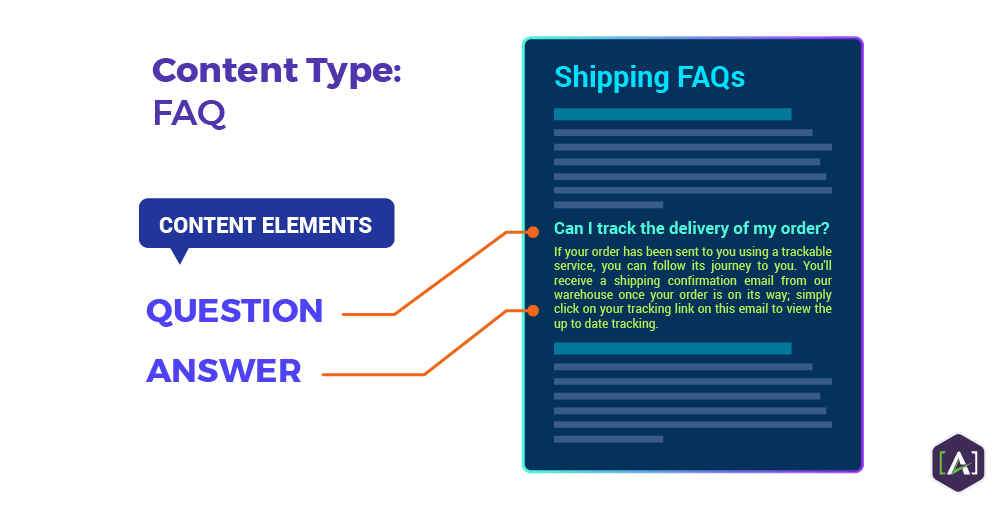Evolutionarily, our brains are optimized to search for patterns. All of us do this constantly and subconsciously.

The world's largest online retailer - Amazon - is based on pattern recognition. Part of their success was mimicking how our brains work, which made finding products intuitive and effortless. Every online retailer just tried to copy their model for success.
Amazon organizes products in electronics based on common features, which they then sub-classify into computers, cell phone, cameras, home audio, and so on.
When modeling content, we intuitively do the same: we search for patterns, and based on those patterns we classify content in what we call
content types.
What is a Content Type?
A content type is an individual unit of content that generally has a unique structure and set of components. Examples of Content Types are:
- Article
- Video
- Profile
- Testimony
- Question and Answer
- Product overview
- Case study
- Landing page
A content model is made up of the necessary content types to accomplish a certain project or goal.
An international hotel company might make a content model to improve content and localization of their online hotel offerings, and so they might decide that they need these content types: room description, amenities, customer reviews, tour offers, blog posts.
It may be tempting for content strategists new to content modeling to want to spec out different content themes. But remember, content modeling is about organizing the structure of content and not the content itself.
For example, “blogs on vegan recipes” and “blogs on vegetarian recipes” have different content, yet both are recipes and represented as blogs and so will likely be structured similarly.
So, the components and structure of a blog post will likely “look” the same or very similar to other blog posts, while the components and structure of a blog post will likely “look” different from the components and structure of a room description or hotel amenities; this is why blog post and room description are separate content types.
A common mistake is to think about content types as a web page. These should not be confused, as several different types can live simultaneously on one webpage. For example, a page may contain a product description or specs, customer reviews and a contact form. Each of these may be defined as a different content type. Also, don’t confuse appearance (bolded or itliziced text) with structure (header text, body text) and accidentally building appearance elements into your model.
Additionally, a content model should also be channel agnostic. The same content type - ex. product specifications - should have the flexibility to be rendered on a webpage, an email, pdf, etc.
Assembling Content Types Into a Content Model
Now that we have asked questions about our world of content, answered them, and defined content types, we have the building blocks to create the simplest form of the content model.
A content model with only the names of content types is sometimes called a
“conceptual content model”. It can be useful at the beginning of a project to organize one’s thoughts, communicate or workshop the plan across teams, and simply display how the content will relate to each other without clutter.

How the content model should be displayed and what to include will depend upon the audience and what information needs to be communicated at this stage in the process.
Diving Deeper
Identifying content types is an important first step to content modeling and can be a useful deliverable in the beginning stages of a project.
But identifying content types on their own will not be enough to create templates for your content, prep it for reuse, and do all of the other cool things modular content makes possible. To make that happen, we need to break content types down further. Content models are composed of content types, and content types themselves are composed of
elements.
Read What are Content Elements? to learn more!
Contact Us for a Free Consultation.